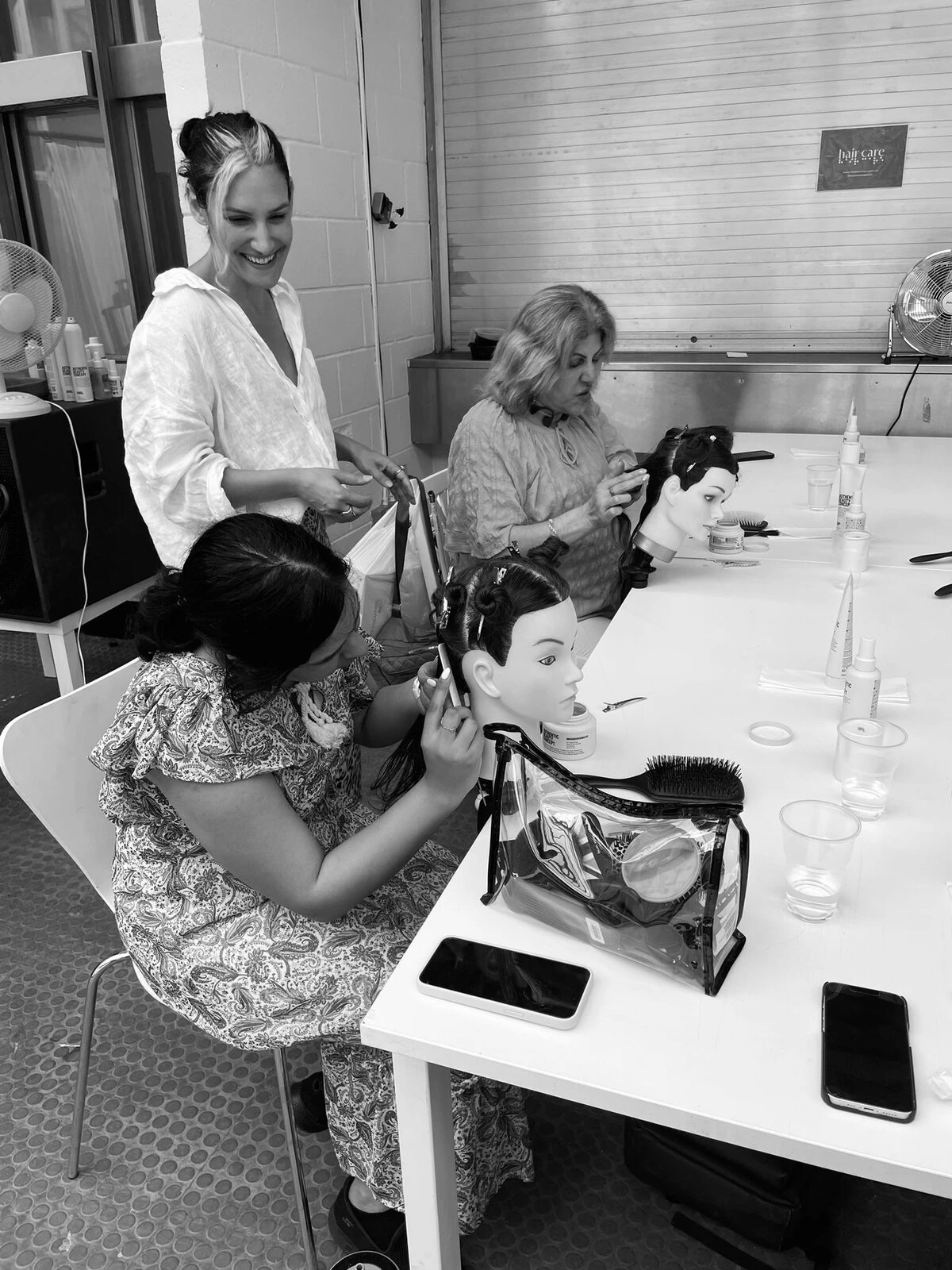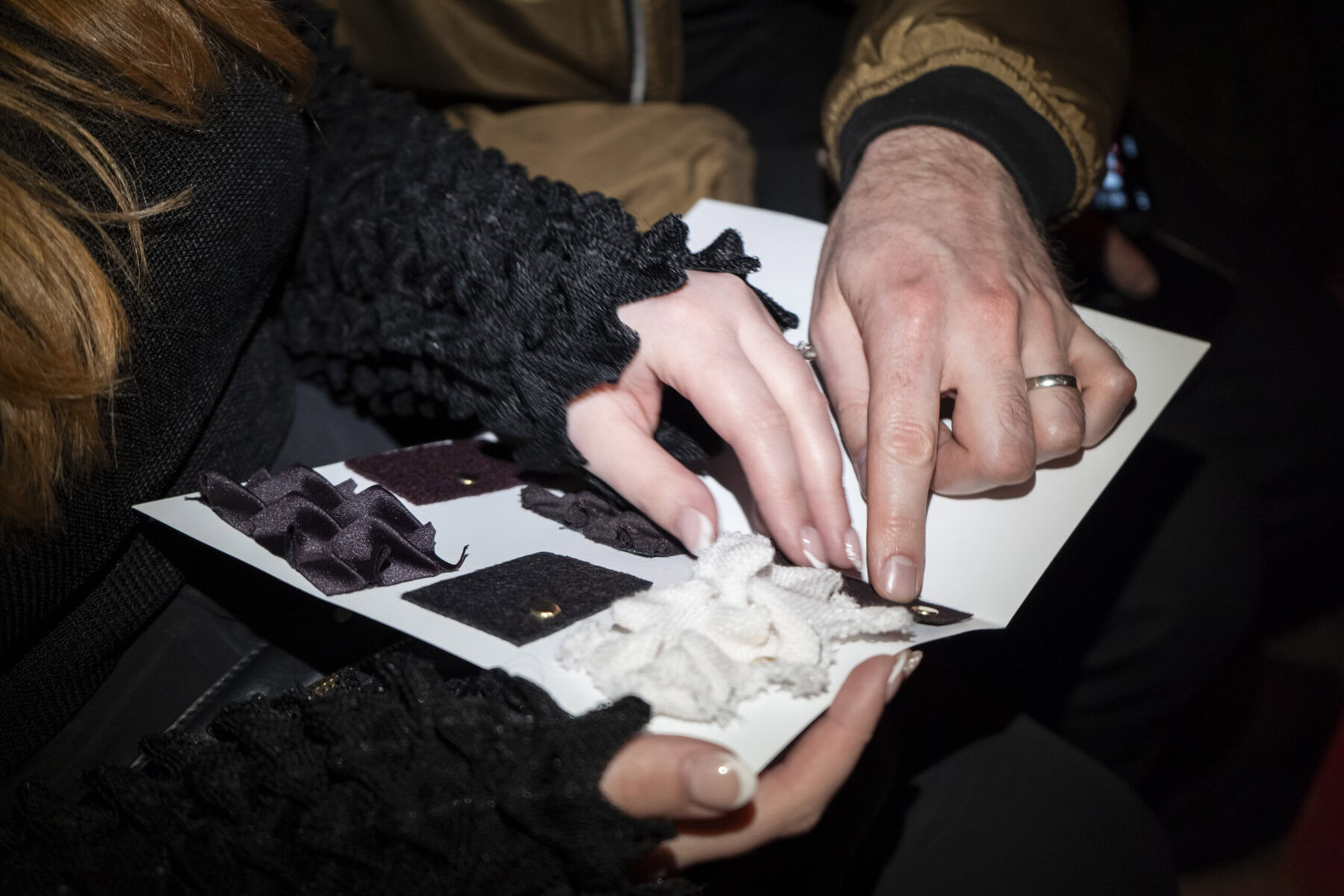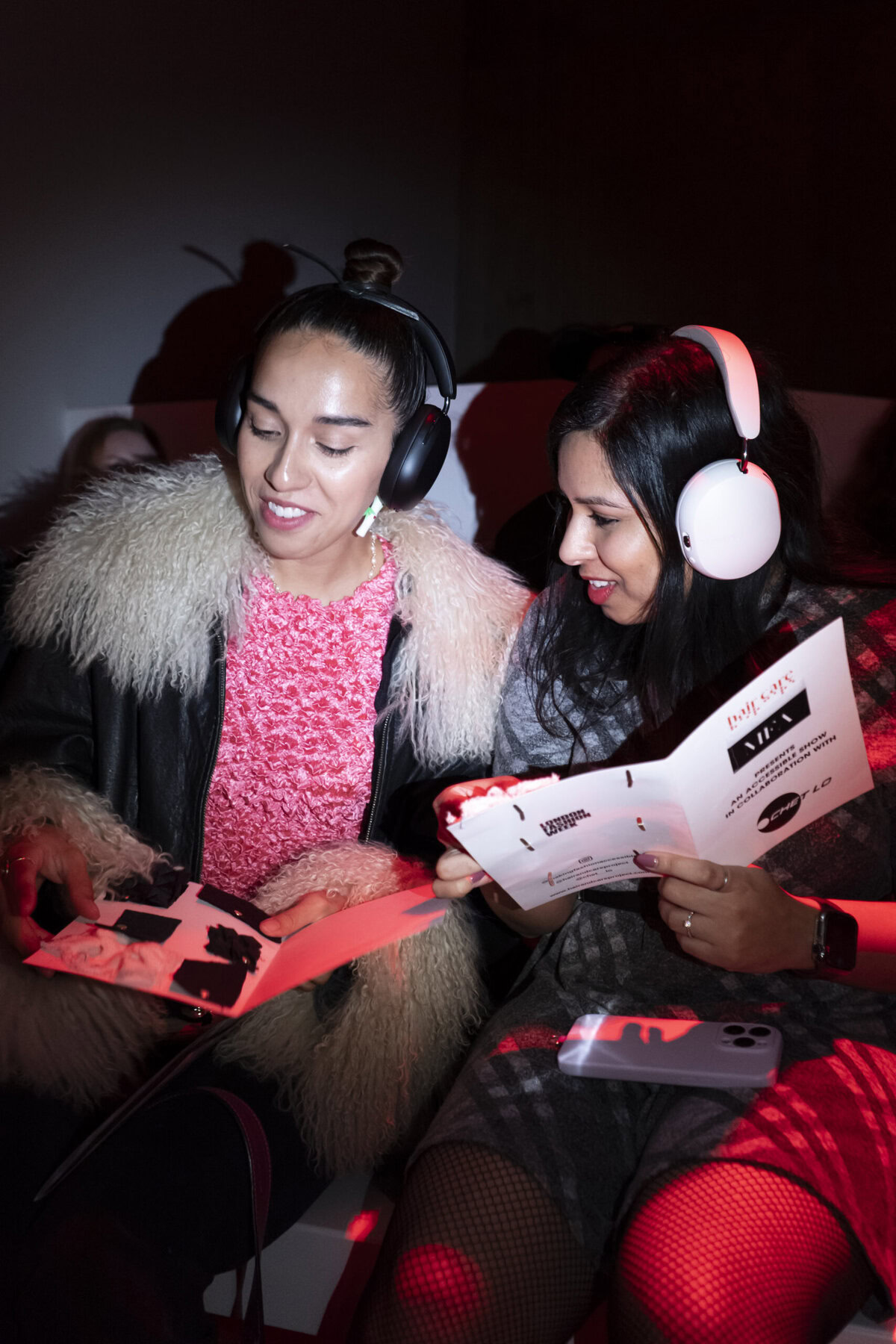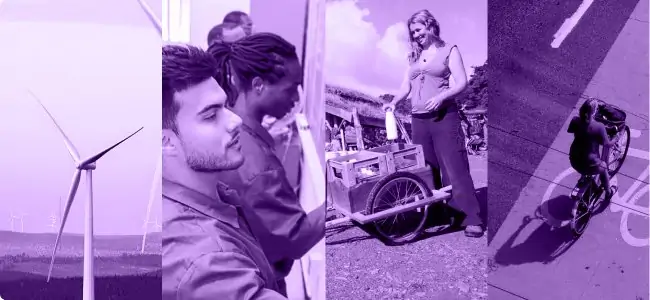On a spring morning in March 2025, a group of women gathered in a hall above a bus station in Hackney, about 4.5 miles from London. In front of them was a dazzling array of conditioners, serums, mousses and hairbrushes, punctuated by the odd mannequin head. Amid merriment and banter, they learned how to use different products and tools and felt the texture of their own hair. They learned about the optimum amounts of product needed to keep their hair looking fabulous — even if they could not see it for themselves.
This was no ordinary hair styling session. Led by hair stylist Anna Cofone, who has tamed the manes of Lana Del Rey, Dua Lipa and other glamorous stars, this workshop taught people with vision loss how to experiment with hairstyles and products and feel their way around different brushes. Learning to groom themselves, Cofone believes, could help over two million people in the United Kingdom who live with vision loss to feel more included by the fashion and beauty industry — and become more self-reliant and confident.

Growing up with a father who had retinitis pigmentosa and began losing his eyesight in his twenties, Cofone witnessed first-hand how vision loss erodes confidence, lowers self esteem and renders the person, as Cofone puts it, ‘invisible.’ One of the hardest things for Cofone was to watch him walk into a room, and just not be seen or acknowledged. “I realized that people tend not to really see people with disabilities,” she says. “It was quite sad as a child looking at my dad’s life; his world was so small.”
People with disabilities around the world face this lack of visibility. Although the WHO estimates that one in every six people has a disability of some sort, the global fashion and beauty industries often lose sight — forgive the pun — of this statistic.
“For my father, self-care and his appearance played a vital role in him retaining his sense of identity and enabling him to feel seen,” Cofone says, “and that was the reason I founded the Hair & Care Project in 2019.” The project aims to make fashion and beauty more accessible for people with vision loss. It organizes free hair styling workshops for people with blindness and low vision every month, and works with fashion designers to make their work more accessible.
“Hair is your crown of beauty, and knowing how to take care of your hair is knowing how to take care of yourself,” says 26-year-old Jessikah Inaba, the first barrister in the UK who is Black and blind. “People who are visually impaired tend to rely on other people to decide how to style their hair. Taking ownership of that is almost like you’re reclaiming a part of yourself.” During the pandemic, Inaba chaired a group for visually impaired girls between 11 and 25 years of age. She first encountered Hair & Care when the project conducted an online session with girls from the group. The girls loved the workshops, she says, and this was when she realized how useful something as basic as hair care could be.
In a large studio in Hackney, Cofone and her team of volunteer hair stylists work with attendees, many of whom are regulars, to curl, braid and style their locks. “Almost all of our participants emphasize that they do not feel included by the beauty industry, and more specifically within hair care available to them,” Cofone says. The Hair & Care workshops teach them how to look good and, more importantly, feel good.

Each three-hour workshop is centered around the specific needs of the participants. In the March workshop, for example, attendees explored the uses of different conditioners, serums, mousse and lotions, and learned to shape and define their curls. Previous workshops have taught attendees to safely use heated tools and different types of brushes to achieve different looks. “We make sure that we have a volunteer hair stylist per person so that everyone gets one-on-one guidance and support,” Cofone says, “and they are trained especially on how to give accessible instructions to participants.” Often, attendees practice on mannequin heads before they practice on themselves.
Over 300 blind and low-vision women have participated in Hair & Care workshops so far. Since they are free for participants, funding is a perpetual challenge. Cofone estimates that the project’s annual running costs are around £30,000, or about $38,500 U.S. The workshops are supported by international hair care brands like Denman and Authentic Beauty Concept. Additionally, U.K.-based organizations like the National Lottery, People’s Postcode Society and Hackney Council have helped Hair & Care expand its reach and continue to keep its workshops free.
Weighed down by negative news?
Our smart, bright, weekly newsletter is the uplift you’ve been looking for.In 2024, Cofone decided to extend the idea of bridging the disability gap to fashion. “There is an assumption that blind or low-vision people don’t care about clothes or hair or makeup,” she says, adding that the workshops have shown her that the exact opposite is true. While working backstage at London Fashion Week designing hair looks for several fashion shows, she had access to some designers. “I went to those designers and said to them, ‘How about you make your show accessible for blind and low vision people?’” she recalls. And some, such as Sinéad O’Dwyer, Roksanda, SS Daley and Chet Lo, agreed.
Blind since she was a few months old, Inaba loves fashion, describing herself as “a dressy person.” “But I never thought of going for fashion shows as they weren’t accessible,” she says. During the 2025 London Fashion Week, however, she went to Hair & Care’s special preview of Asian American designer Chet Lo’s collection. “We were able to feel the clothes … talk about the texture … feel the stretch [of the fabric] and think about the different body types that could fit into the type of clothing we had in front of us,” Inaba recounts.

Making fashion shows accessible is a labor of love. First, Hair & Care works with the designer to create detailed audio descriptions of the collection, describing the colors, shapes and fabrics. This requires a whole new way of thinking about clothes. A checked pattern, for example, is described as being made up of little squares, and classically worn in the office. At the show venue, visually impaired guests are seated in a relatively quiet area and given noise-canceling headphones so they can listen to the commentary undistracted by the customary loud music at such events. Some designers, like Chet Lo and SS Daley, have even developed fabric swatch booklets for visually impaired fashionistas to touch.

“Touching the actual clothes worn during the show helped me imagine what they would look like,” Inaba says. Indeed, some research on accessible fashion indicates that in addition to promoting individual expression and autonomy among people with visual impairments, it may also stimulate their creative development by helping them make mental representations of shapes, patterns and even colors.
Moreover, accessible fashion shows go a long way toward making people with low or no vision feel included. Inaba was lucky to grow up with an elder sister as her style guru, but says that many young women like her have a hard time trying to figure out the prevalent fashion and beauty trends. “When fashion is not accessible to girls like them but is accessible to everyone else, it’s almost like they’re left in the Dark Ages and the rest of society is advancing,” she says.
Clearly, the highly visual world of fashion with its exacting, unattainable beauty standards still has a long way to go before it becomes truly inclusive, but attitudes are beginning to shift. Some of this is market-driven. Estimates suggest that globally, people with disabilities are a larger market than China, with a population that exceeds 1.85 billion. Fashion brands are catching on; for example, Gucci is using a visual interpreting service to improve in-store accessibility for disabled consumers. Fashion media, too: Since 2024, British Vogue magazine has published a braille edition. Inaba appeared in its first braille issue, and felt it was very inclusive. “They described all the dresses that people were wearing in braille and also in an audio version,” she says. “So now if anyone who has a visual impairment wants to be a la mode as we say in French, they’re able to do so independently, by interacting with the same platforms that other people do.”
Meanwhile Cofone continues her crusade to help bring the visually impaired into the purview of mainstream fashion. “Underneath its very superficial and materialistic level, hair and makeup and fashion have quite a profound impact on [visually impaired] people in terms of their confidence, sense of identity, their sense of belonging,” she says. “And if it makes them want to go out, have a different type of social life, and potentially find a job, then that’s amazing, isn’t it?”





